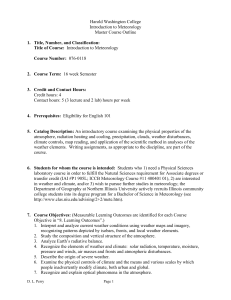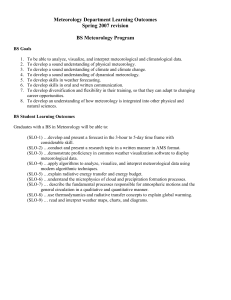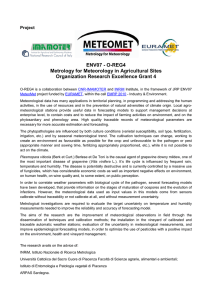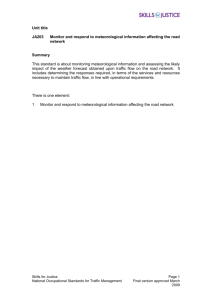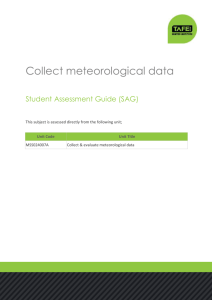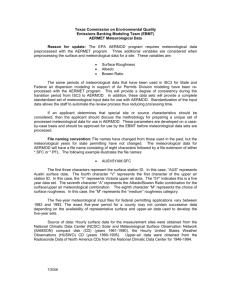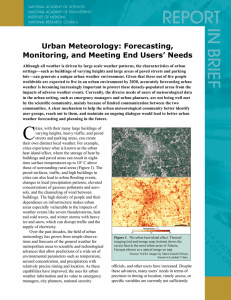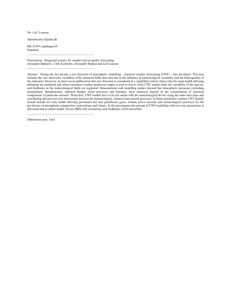GMR 6101 Introductory Meteorology
advertisement
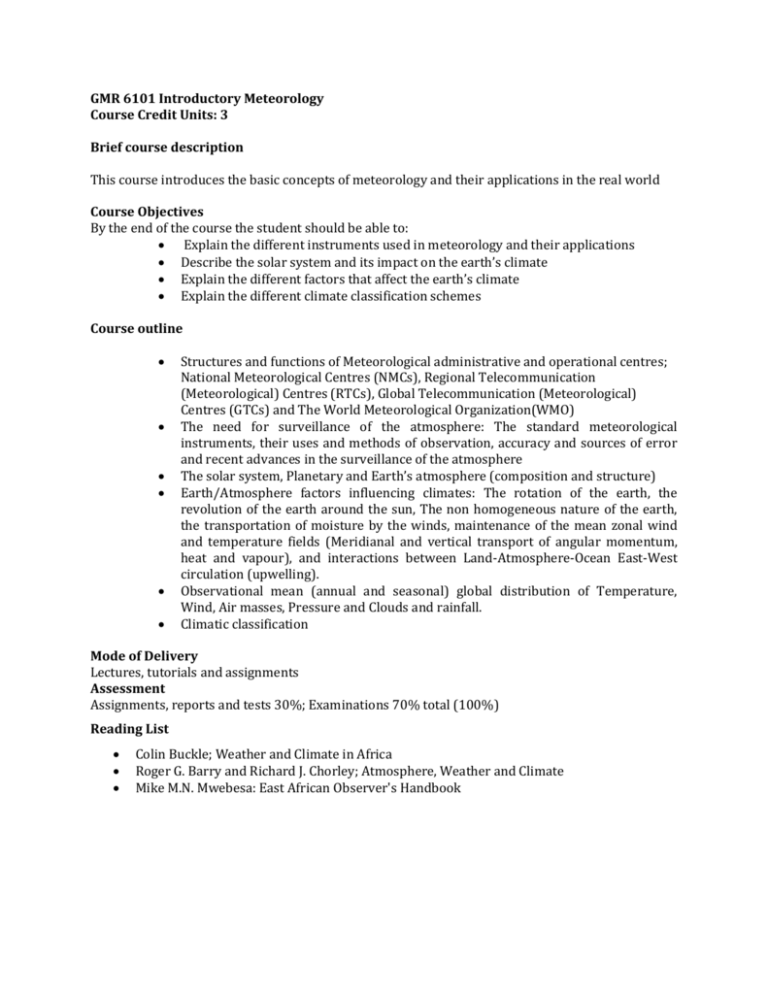
GMR 6101 Introductory Meteorology Course Credit Units: 3 Brief course description This course introduces the basic concepts of meteorology and their applications in the real world Course Objectives By the end of the course the student should be able to: Explain the different instruments used in meteorology and their applications Describe the solar system and its impact on the earth’s climate Explain the different factors that affect the earth’s climate Explain the different climate classification schemes Course outline Structures and functions of Meteorological administrative and operational centres; National Meteorological Centres (NMCs), Regional Telecommunication (Meteorological) Centres (RTCs), Global Telecommunication (Meteorological) Centres (GTCs) and The World Meteorological Organization(WMO) The need for surveillance of the atmosphere: The standard meteorological instruments, their uses and methods of observation, accuracy and sources of error and recent advances in the surveillance of the atmosphere The solar system, Planetary and Earth’s atmosphere (composition and structure) Earth/Atmosphere factors influencing climates: The rotation of the earth, the revolution of the earth around the sun, The non homogeneous nature of the earth, the transportation of moisture by the winds, maintenance of the mean zonal wind and temperature fields (Meridianal and vertical transport of angular momentum, heat and vapour), and interactions between Land-Atmosphere-Ocean East-West circulation (upwelling). Observational mean (annual and seasonal) global distribution of Temperature, Wind, Air masses, Pressure and Clouds and rainfall. Climatic classification Mode of Delivery Lectures, tutorials and assignments Assessment Assignments, reports and tests 30%; Examinations 70% total (100%) Reading List Colin Buckle; Weather and Climate in Africa Roger G. Barry and Richard J. Chorley; Atmosphere, Weather and Climate Mike M.N. Mwebesa: East African Observer's Handbook


